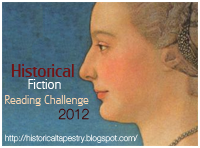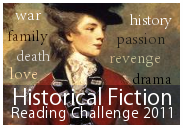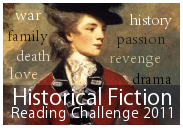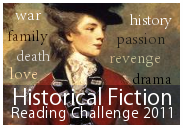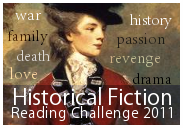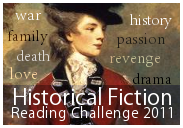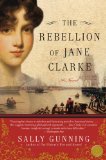[amazon_image id=”0062064223″ link=”true” target=”_blank” size=”medium” class=”alignleft”]The Flight of Gemma Hardy: A Novel[/amazon_image]Margot Livesey’s novel [amazon_link id=”0062064223″ target=”_blank” ]The Flight of Gemma Hardy[/amazon_link] is a retelling of Charlotte Brontë’s [amazon_link id=”B004CFA9Y6″ target=”_blank” ]Jane Eyre[/amazon_link]. Like Jane, Gemma is taken in by her uncle and his family after the deaths of her parents, and once her uncle also passes away, she is abused and neglected by her aunt, who ships her off to a boarding school as a “working girl,” where she pays for her tuition and board through menial labor for the school and is treated like a second-class citizen. When the school closes, Gemma must shift for herself, so she answers an ad for an au pair position in the Orkneys. She moves into Blackbird Hall and quickly subdues her wild charge, Nell. Hugh Sinclair, Nell’s uncle and guardian, returns to Blackbird Hall and soon finds himself entranced by Gemma.
While the story closely follows the plot of Jane Eyre, Livesey has added details that make the story Gemma’s own. Gemma, born in Scotland to a Scottish mother and Icelandic father, wonders about her Icelandic family and yearns to travel to Iceland to see if she can uncover her past. The story is set mostly in Scotland in the 1950’s and 1960’s. Gemma has opportunities that Jane couldn’t have imagined; for instance, Gemma is able to sit for exams and go to college.
The danger in writing updated versions of classic novels is that they will seem too derivative to be their own story, but I didn’t find this to be the case with The Flight of Gemma Hardy. Because I had read Jane Eyre, I could guess the general directions in which various plot points would turn, but Livesey threw in enough unique details and changes that I felt the novel was much more of an homage to Jane Eyre than an imitation. Another challenge Livesey successfully navigates is making the story of Jane’s sad childhood and subsequent removal to Thornfield Hall believable in the twentieth century. Not only does Livesey answer this challenge, but in my opinion, she tempers a bit of the horrific improbability present in Jane Eyre. I know, I know—Charlotte experienced some of the horrible events she describes in Jane Eyre at the Clergy Daughters’ School. Tragedy ran rampant through the Brontë family, and I don’t mean to make light of it. However, it reminds me that sometimes true stories sound over the top when rendered in fiction. Young Jane’s early experiences, the goodness of Helen Burns, the evil of Aunt Reed and Mr. Brocklehurst—all these rang slightly too awful to believe when I read them, which isn’t to say I didn’t love Jane Eyre. Gemma’s experiences, while uniquely horrible in their way, read as more realistic, and Helen’s counterpart Miriam is a more believable and less “Mary Sue” type of character (and yes, I know that Charlotte based Helen on her sister Maria, and that Charlotte claims Maria really was that good).
I liked Gemma. She is smart and spunky, particularly as a child. The supporting cast are all enjoyable, too, particularly Gemma’s charges Nell and Robin. I loved the Rivers sisters’ counterparts Hannah and Pauline. St. John Rivers’s counterpart Archie was more likable than St. John himself. The relocation to Scotland and Iceland made for an intriguing setting that rendered events in the story more believable, I think, than they might have been had Livesey set her novel in England. I do think fans of Jane Eyre will enjoy this book, but I think it stands on its own as a fine novel without its connection to its literary ancestor.
Rating:




You can find Margot Livesey online at her website, her Facebook page, and her Twitter account.
 I read this novel for the TLC Book Tour. You can visit the other stops below on the dates listed to read other reviews of this novel.
I read this novel for the TLC Book Tour. You can visit the other stops below on the dates listed to read other reviews of this novel.
- Tuesday, January 30th: Just Joanna *
- Wednesday, February 1st: Book Reviews by Molly *
- Thursday, February 2nd: A Library of My Own
- Tuesday, February 14th: Much Madness is Divinest Sense
- Wednesday, February 15th: Into the Hall of Books
- Thursday, February 16th: Chaotic Compendiums *
- Monday, February 20th: Luxury Reading
- Tuesday, February 21st: Coffee and A Book Chick
- Tuesday, February 21st: The Whimsical Cottage
- Wednesday, February 22nd: A Chick Who Reads
- Thursday, February 23rd: Book Nook Club
- Tuesday, February 28th: It’s a Crazy, Beautiful Life
- Wednesday, February 29th: ooldes of books
- Thursday, March 1st: Book Clutter
- Monday, March 5th: Book Journey
- Tuesday, March 6th: Drey’s Library
- Wednesday, March 7th: Book-a-rama
- Thursday, March 8th: Unabridged Chick *
*Also reading Jane Eyre

